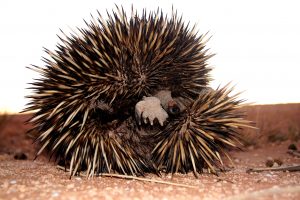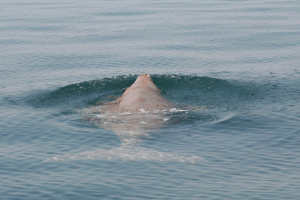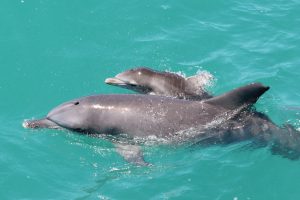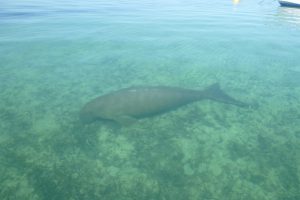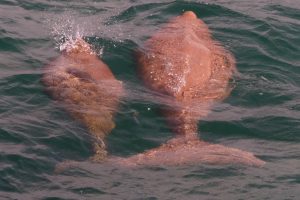Mammals
Dugongs (Dugong dugon) and Indo-Pacific bottlenose dolphins (Tursiops aduncus) reside in the waters of Shark Bay while humpback whales (Megaptera novaeangliae) visit each year. Bernier, Dorre, Salutation and Faure islands are already important for terrestrial mammals while Dirk Hartog Island is on the verge of becoming a refuge for 12 species.
Bernier Island has the only natural wild population of the Shark Bay mouse (Pseudomys fieldi). Bernier and Dorre islands are home to the only natural wild populations of the Shark Bay bandicoot (Perameles bougainville), banded hare-wallaby (Lagostrophus fasciatus), and rufous hare-wallaby (Lagorchestes hirsutus). The survival of boodies (Bettongia lesueur) is also dependent on Bernier and Dorre islands even though they are found elsewhere. Dorre Island is one of only two islands where Shark Bay bandicoots are free of a papilloma virus.
A translocated population of greater stick-nest rats (Leporillus conditor) is thriving on Salutation Island and Faure Island is home to a number of translocated species – boodie, banded hare wallaby, Shark Bay bandicoot and Shark Bay mouse. Peron Peninsula hosts a reintroduced population of bilbies (Macrotis lagotis).
Since feral cats and goats were declared eradicated in 2018, Dirk Hartog Island has been receiving translocated species and has become a refuge for rufous and banded hare-wallabies, dibblers (Parantechinus apicalis) and Shark Bay bandicoots. Future translocations include Chuditch (Dasyurus geoffroii), mulgara (Dasycercus blythi), greater stick-nest rats, desert mouse (Pseudomys desertor), Shark Bay mouse, heath mouse (Pseudomys shortridgei), woylie (Bettongia pencilliata), western grasswrens (Amytornis textilis) and boodies (Bettongia lesueur).

